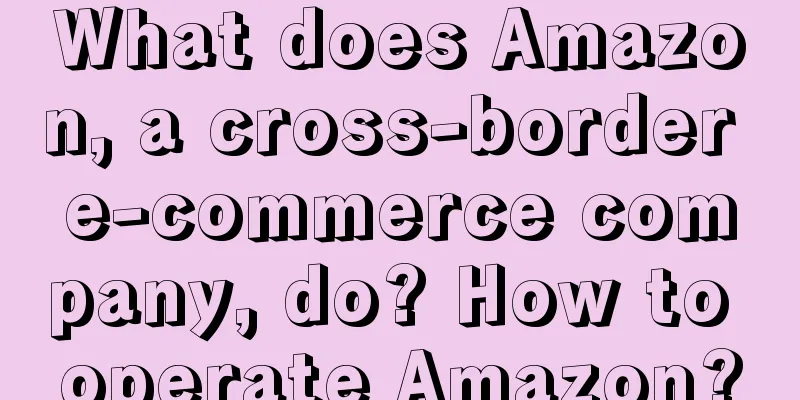It’s been three years, why is Holiland still doing joint brands?

Is co-branding marketing the universal formula? Just two months after its last collaboration with Barbie, Holiland has teamed up again, this time with the jewelry brand YVMIN. The two joint gift boxes cover the two top gift categories of toys and jewelry. It can be seen that Holiland really attaches great importance to this 520. As a brand that is over 30 years old, Holiland has been very daring in recent years, especially in the direction of brand collaboration, and has almost touched upon all the popular brands and IPs on the market. From "Ranking of Kings" to "Harry Potter", from Pop Mart to Disney, with waves of brand collaborations, Holiland has become famous on social media and has become one of the most successful brands targeting younger people in recent years. But behind this excitement there are hidden worries. Especially after the collapse of baking brands such as Christine and Hutouju, it is hard not to worry about Holiland. After all, crazy joint names are not a universal formula for brand marketing. In essence, they are just a kind of leverage. Holiland has not yet completely stood up on its own. 1. Is Holiland’s 520 collaboration with Barbie and Youmu worth looking forward to?Let’s talk about 520 first. This time, Holiland and Barbie launched three new products and a 520 gift box, as well as a series of peripherals, all of which are pink from beginning to end. The 520 gift box launched by YVMIN and Youmu made the cake into a shell shape, which is "exaggerated" to the extreme. Cooperate with Barbie and YVMIN to create a joint gift box It is hard to say whether the collaboration of these two products is good or bad. On the one hand, Barbie is the childhood memory of many girls, and has begun to show signs of breaking out of the circle under the trend of the fashion circle this year. As a local niche jewelry brand, YVMIN has always been unique in the field of art and cool. The audiences of the two brands are highly overlapped with Holiland, so it is reasonable for them to join hands with each other. On the other hand, the attributes of "re-popularity" and "niche" put a "tight ring" on this joint venture. "Niche" means a small circle and high inherent brand stickiness; "re-popularity" directly refers to low driving force and unstable consumption tendency. The combination of these two factors destined this joint venture to fail to create a hot spot in the form of event marketing, let alone to achieve phenomenal communication and conversion for Holiland. What is the problem behind the mapping? It may be that the two joint ventures this time were not up to standard, or it may be a signal that Holiland's joint venture model has reached a bottleneck. After all, there are only a few super IPs that are deeply rooted in people's hearts, and consumers' expectations can be infinitely raised. This also reminds us once again of the shortcomings of the crazy joint marketing model - it is highly dependent on existing influence, and the ceiling of innovation is extremely limited. Even if it can maintain a high standard, it is still difficult to be immune to the backlash in word of mouth and sales. To put it bluntly, this kind of traffic game can help brands capture the market in a more economical and efficient way at a certain stage, but that’s all. If you get caught up in the short-term pleasure brought by traffic, it will hurt the brand instead. 2. What is the specific connotation of “youth” and “fun” in brand flattening?This kind of "backlash" has gradually begun to appear in Holiland. Holiland's earliest brand collaboration can be traced back to its collaboration with Heytea in 2019. Perhaps inspired by this collaboration, Holiland has been on a journey of collaboration ever since. According to incomplete statistics, Holiland has launched nearly 40 joint marketing campaigns from 2019 to date, with the most frequent being once a month. Posters of some Holiland brand products With the support of these IPs, Holiland has grown against the trend in the depressed baking market in recent years, achieving a 2.5-fold increase in monthly sales. More importantly, it has also helped the brand get rid of its old-fashioned look and become one of the most popular brands on social media. However, all is not well. While constantly refreshing its sales and attracting the next batch of IP fans, Holiland's brand image has become increasingly flat. Someone will certainly refute this statement: "Fun and youthful is the brand image of Holiland now." Let’s take the 520 collaboration as an example. Barbie and YVMIN, one is fashionable and tender, the other is fantasy and romantic, which fits the theme of the festival. However, if we remove the node attribute, what impression does Holiland give people? Furthermore, in the nearly 40 brand collaborations, what kind of brand image has Holiland accumulated in the minds of consumers? When co-branding with anime IPs, Holiland is like a gathering place for the second dimension; when co-branding with trendy brands, it is like a pioneering trendsetter...IPs come and go, and fans also come and go with IPs. Holiland is no longer the old-fashioned Chinese baking brand in people's impressions. It has become younger and more fun, but it seems unclear what it is specifically. 3. Continuous efforts in visuals and products are effective, but not direct enoughWhen creating crowd portraits, we have all been taught that a good crowd portrait is not a general term such as age, gender, or region, but a kind of emotion, psychology, and life state. Similarly, the brand image that a good brand should establish must not be an empty word. What is more important is how to explain this word so that consumers can form a specific visual memory. If we must break down the specific meaning of Holiland's "fun" and "youth", among the nearly 40 joint ventures, the closest one may be: following the trend. Trend is also a very broad word. What is a trend? It is the brands, IPs, cultures that young people like, or it may be a certain social phenomenon. In many cases, cross-border business tests the sensitivity to these popular trends. In this regard, Holiland has done a really good job. What needs to be noted is that trends are a very large category, including the second dimension, games, street culture, niche sports, etc. It is often unclear where the trend will come from and when it will blow. Moreover, there is no high barrier to "keeping up with the trend", so "sincerity" has become the main criterion for brand collaboration. How to highlight sincerity? The common approach is to put a lot of effort into visuals and products. Holiland is also taking this approach, hoping to use visual design and product innovation to transfer the traffic brought by trends to brand building. However, as of now, this road does not seem to be very smooth. 1. Visual DesignLooking through the designs of Holiland’s co-branded products, there are Japanese aesthetics, cyber sci-fi, and childlike cuteness, almost all visual styles have been tried. In this increasingly rational consumption era, visual experience still plays an extremely important role in purchasing decisions. However, from the perspective of brand building, although Holiland’s co-branded visuals are beautiful, their effectiveness is discounted. Think about the brands and cases that have been very successful in the field of brand co-branding: Heytea will do its best to make use of its logo, creating a visual hammer to strengthen the mind; although Luckin’s co-branded design is fancy, it is only on the cup sleeve and packaging bag, and the core cup body almost never changes, so as not to let the visual style dominate. Heytea powder and Holiland powder On the other hand, Holiland has a different theme for each collaboration, and the visual style, product packaging, and even the shape of the cakes are all very different. The flat logo lacks enough memorable points in the fancy packaging/peripheral design. Holiland's original brand logo also had distinctive features. In order to strengthen the brand's youthful image, Holiland "changed its face" in 2020, removing the little red heart on the original "i" and adjusting the font to a simpler and more concise sans serif font. Holiland old and new logo The overall style of the adjusted logo is more concise and trendy, which is more suitable for the aesthetics of a distracted environment, but it also reduces some of the brand characteristics. This leads to a lack of recognition in the minimalist brand logo, and a lack of strong perception and memory in the opposite, colorful joint visual design. 2. The product itselfDespite its eye-catching appearance, Holiland's products often receive mixed reviews. On the one hand, it is difficult to satisfy everyone, and the craftsmanship of baked products has a certain threshold; on the other hand, product prices and visual experience raise consumers' psychological expectations. Some media have pointed out that as of early December 2022, 30% of Holiland's total sales came from the popular semi-ripened cheese launched in 2015, and co-branded products accounted for only 20%. In the absence of co-branded works in the first quarter of 2023, this figure may be even lower. The reason behind this is not difficult to understand. In terms of crowd attributes, IP fans have their own filters, do not have high requirements for taste, and are more of a one-time consumption behavior. Those who emphasize taste are the core group that will repurchase for a long time. If the taste of the co-branded product is not satisfactory, they will naturally turn to other products, or even other brands. Holiland's star product, semi-ripened cheese It can be seen that Holiland has been constantly co-branding and the flavors are constantly being updated, but most of the co-branded products do not have strong product power. Consumers may come for the co-branded IP, but Holiland cannot necessarily retain consumers with the flavor. 4. The return to calmness may be a better solutionBrands like Heytea and Luckin Coffee were also crazy about joint brands, but they later came to their senses and no longer regarded joint brands as their core competence. Perhaps this will also be the path that Holiland will take in the future. There is a strange theory in the baking industry: "There is a reshuffle every five years." The reshuffle was accelerated by the epidemic, so many brands mentioned at the beginning with their exit. When the market environment is not good, survival is the top priority. Holiland can survive, in large part, thanks to the quick-acting heart-saving pill of brand co-branding. You know, in 2019, although Holiland had been upgrading new stores, building personal IP, and trying to establish new products and channels to save itself, the aging brand power did not leave Holiland much time and resources to rebuild its core competitiveness. The joint-brand model, which leverages brand power, product power, channel power, and design power, helped Holiland solve the problem and gave it enough buffer to turn around. Holiland offline concept theme store Times have changed. With the recovery of the market, the baking market is growing. The current market vacancies will inevitably be quickly filled by latecomers. Holiland has little time left. The joint marketing model is no longer suitable for the current brand status and the current market, and will only slow down its pace. 1. The stage attributes of brand co-brandingThe brand co-branding model is essentially a traffic game and another more advanced promotional method. The luxury goods industry, which has almost never seen discounts, believes that promotions are a detriment to brand value because they assume that the brand is not worth its price tag; similarly, although the brand co-branding model has the opportunity to create a 1+1≥2 effect, it also puts two brands on the same stage for comparison. It is clear who the consumers are coming for and who is borrowing from whom. Therefore, using co-branding too frequently as a communication method is undoubtedly acknowledging that the brand power is insufficient. In the early stages of brand building, it is harmless to acknowledge this, but when the brand has begun to have a certain brand power but is not strong enough, such an approach will undoubtedly repeatedly remind consumers of the brand's strength and ranking in the market, solidify the brand's position in the minds of consumers, and add resistance to the brand's subsequent growth. 2. Operational efficiency/cost issuesAs a consumer, co-branding and new product promotion are the same to me. No matter the taste, shape, or packaging, it is nothing more than adding novelty to the product and selling freshness. However, as a marketer, I know that these two methods are completely different. One can compound interest in the long term, while the other is just a temporary trick. First, cross-border joint marketing often requires a lot of manpower and financial resources. If the cross-border joint marketing is not effective, the brand's financial risk will increase accordingly. Second, time is the biggest cost. Now is the time to use the time difference to build the brand's core competitiveness. However, based on the current situation, Holiland's progress in promoting concept theme stores, the strength of new channel construction, and the speed/quality of new product development are slightly unsatisfactory. 3. Beware the trap of consumerismAt present, the emergence of "anti-planting" and "core culture" has shown that consumers are disgusted with excessive brand promotion and formalistic marketing methods. Good marketing must pay attention to a balance between tension and relaxation. Too much enthusiasm for embracing traffic instead of working hard on product strength will be seen as "cutting leeks" in the eyes of consumers, which will bring potential damage to consumer trust and financial status. Brand management is a long-term behavior, while marketing is only a systematic activity carried out to achieve business goals in the short term. In three years, Holiland has reversed its outdated image in the minds of the public, and its brand power has also been greatly improved. At present, the market is stable, and it is time to cultivate internal strength and expand brand advantages. It is time for Holiland to consider letting this three-year brand collaboration return to calm. Author: Dguagua, WeChat public account: Shock Copywriter (ID: SHOCKCW) |
Recommend
Will an Amazon account be cancelled if it is not used for a long time? How long does it take to cancel it?
Now, no matter which software you use, if you want...
Does Shopee make money as an e-commerce company? Shopee's strategy for operating without a source of goods
Shopee is a relatively late-developed platform, bu...
Revealing the current situation of short drama casting: There are so many beauties but it is hard to find a top boss, and the daily salary of the "top stars" exceeds 10,000 yuan
The popularity of short dramas has brought a numbe...
What did this brand with annual sales of over 100 million do right on Xiaohongshu?
As a young and vibrant social e-commerce platform,...
Double 12 "online shopping carnival" fades away
This year's Double 12 ended in a lukewarm mann...
4 directions for Mid-Autumn Festival marketing
During every festival, brands are eager to make mo...
WeChat gifts, on the eve of an explosion
As the Spring Festival approaches, WeChat quietly ...
A private domain operator tells you how to double user retention (Part 2)
In the previous article, we shared the reasons why...
How to settle in shein without a factory? What are the requirements?
Now many domestic merchants are going to settle in...
3.82 million people online in 5 minutes, is Liu Qiangdong's AI clone the antidote to JD Live?
Recently, JD.com founder Liu Qiangdong's AI di...
What? Selling wontons on Xiaohongshu, 20,000 sales in 2 months, with a turnover of over one million
This article disassembles the personal account &qu...
With beauty product sales declining, is Bilibili a new oasis?
Nowadays, beauty sales are showing a downward tren...
What should I do if I don’t advertise on Amazon and get no orders? What’s the reason?
There are still many novice merchants who open sto...
Order Luckin Coffee on JD.com, and Meituan will cry for it
JD.com recently launched a new service that allows...
Is it better to have a lower price on Amazon? Can prices be adjusted at will?
The product pricing strategy on Amazon's cross...







![This [User Behavior Analysis] guide is so professional!](/upload/images/67e6f87b00466.webp)

